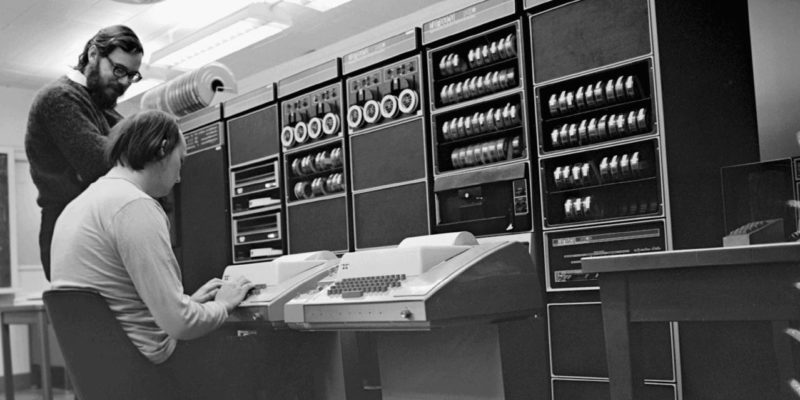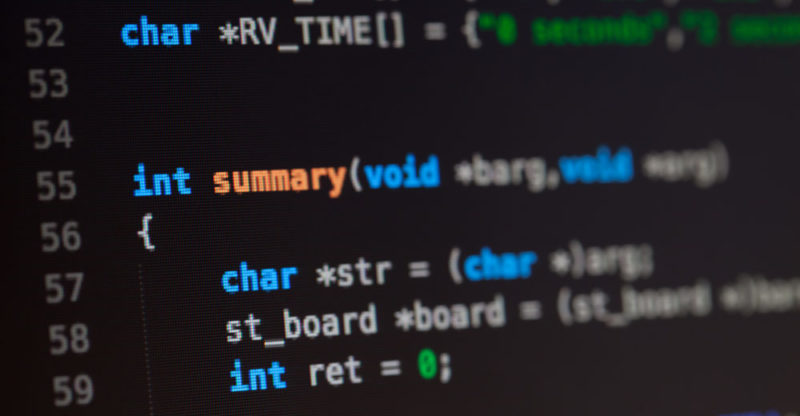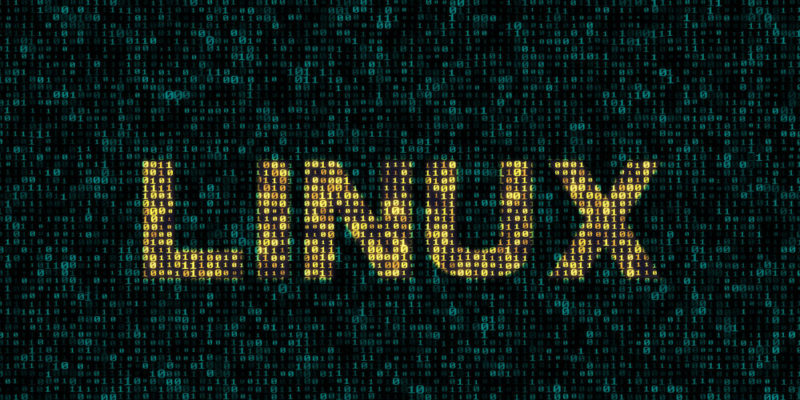We explain what Unix is, the history of its creation and the various uses it has. In addition, its characteristics, advantages and disadvantages.
What is Unix?
Unix is known as the brand of a family of computer operating systems developed from the 1960s and that are characterized by being open source , that is, their own users can contribute to its development, updating and improvement, in addition to be portable, multitasking and multiuser.
Therefore, there is not a single version of Unix, but rather a series of applications and commercial developments called "implementations" , some of which are sold on the market with copyright and others offered for free among user communities and computer groups.
Even so, we speak of “traditional Unix” to refer to the more or less standard version . The rest can be called "Unix-like".
What is special about Unix is its utility to jointly manage the resources of a machine among several users, allocating them to each based on a shared time.
It is also the operating system most used by hackers in the world.
Unix history

The first developers of Unix were Dennis Ritchie, Ken Thompson, Douglas McIroy and Joe Osana , programmers at AT&T Bell Laboratories, a company that sold the rights to the system to Novell Inc., who resold them to Santa Cruz Operation (1995) and this in turn to Caldera Software (2001), later SCO group.
However, Novell always warned that it was selling the rights of use and not ownership , so after a long legal conflict, it has recovered the copyright in 2010.
Trademark UNIX®
The name "Unix" was initially UNICS , an acronym for Uniplexed Information and Computing System, a name that meant a version ( hack ) of the Multics systems.
The name was later changed to Unix and it is registered as a trademark and protects by copyright all Unix systems that comply with the “ Single Unix Specification ”, a series of identification standards for systems of said family.
However, the term became popular as the equivalent of the entire family , so numerous free variants distributed on the net choose to be called UN*X, UNIX*, *NIX, or *N?X.
General features of Unix

In general, UNIX is a multi-user operating system , written in the C programming language, with the ability to simulate multiprocessing and non-interactive processing.
It also has process interconnection capacity , which allows its communication and demonstrates a great facility for redirecting inputs and outputs. All this makes it an environment with facilities to create programs and systems, as well as software designs . Hence its enormous popularity.
Uses of Unix
Unix is often used to control multiple user systems and peripherals , in complex resource management systems, and also by advanced users such as programmers or software designers. Above all, it is used in internal or corporate networks and in joint computing systems.
Advantages of Unix

Unix has proven to be a powerful operating system, with a very high adaptability , which also allows the connection of multiple users to a central brain.
Its high compatibility and programmability make it ideal for managing various peripherals (printers, scanners, cameras, etc.), as well as for creating pieces of software . Hence, it is the most popular operating system among hackers and independent programmers.
Disadvantages of Unix
Unix has well-known disadvantages and risks, such as those implicit in its lack of technical support : little computer security and high standards of demand from the user, who must generally be very experienced.
Likewise, being open source, much of the computer material available for Unix is developed in-house, without any quality control.
Unix portability
Unix differs from other operating systems such as MS-DOS in that there is no physical disk (a partition, an external disk, etc.), since everything on it is a file and is “transparent”.
The user interface is precisely a hierarchical tree of . This, added to the representation of the peripherals also as files, entails its enormous portability, one of its most important functions.
Unix Elements

Unix systems are based on two fundamental components:
- SHELL. A programmable control language that establishes communication with the operating system, which operates at the same time as interpreter, messenger and programmer. With it you can dynamically modify the characteristics with which the programs are executed.
- KERNEL . A kernel permanently residing in memory, which operates as the heart of the system: it handles system calls, manages access to files, and starts or suspends user tasks (resource allocator).
Basic Unix commands
The basic user commands in Unix can be summarized (at least the main ones developed in the first edition) in the following:
- Navigation and creation of directories and/or files: ls cd pwd mkdir rm rmdir cp.
- Editing and viewing of files: touch more ed vi nano.
- Text processing: echo cat grep sort uniq sed awk tail head.
- File comparison: comm cmp diff patch.
- System administration: chmod chown ps find xargs sd w who.
- Communications: mail telnet ssh ftp finger rlogin.
- Shell: sh csh ksh.
- Documentation: man.
Popular Unix families

The main Unix families that are known are:
- AT&T. The “pure” or “original” Unix family, whose major versions are UNIX System III and UNIX System IV.
- BSD. A product of Unix licensing to UC Berkeley, it was completely rewritten to lack copyright elements of the original software.
- AIX. Also arisen from a licensing and rewriting of the code, this time to IBM.
- GNU. An attempt to create a freely distributable variant of Unix, called the "GNU Project", in 1983.
- linux . Created in 1991 by Linus Torvalds who combined GNU tools with his own kernel and got a kind of "clone" of Unix that does not come from its original history.
Veronica is a culture reporter at Collaborative Research Group, where she writes about food, fitness, weird stuff on the internet, and, well, just about anything else. She has also covered technology news and has a penchant for smartphone stories. .
Leave a reply
Your email address will not be published. Required fields are marked *Recent post

Sport: What Is It, Types, Risks, Features, Characteristics and Examples

Dogs: Emergence, Features, Characteristics, Feeding and Breeds

Story: Definition, Elements, Structure, Features and Characteristics

